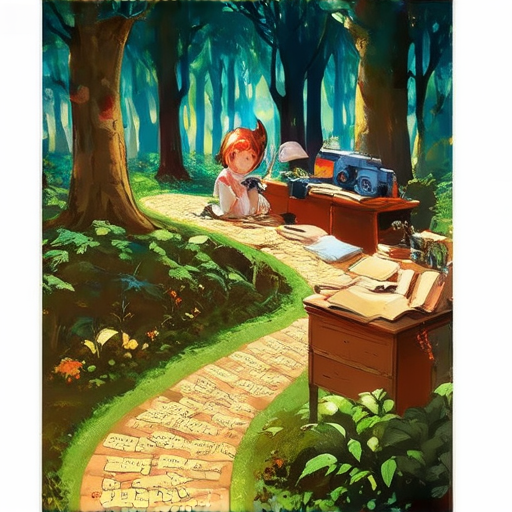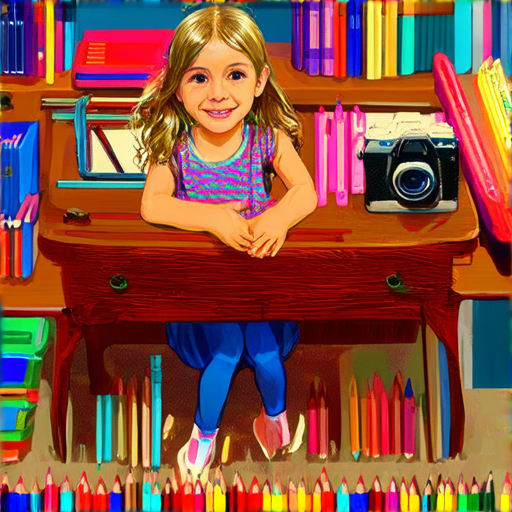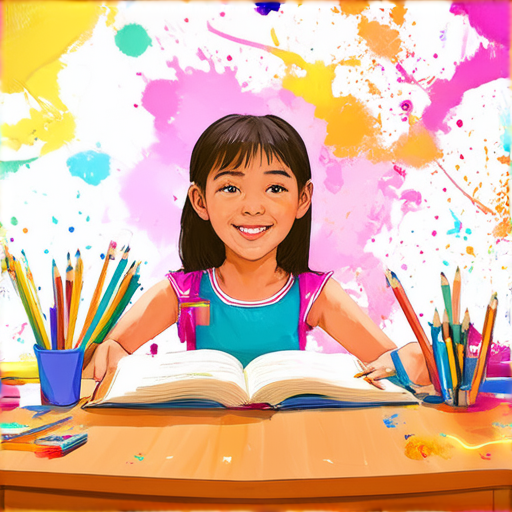As we navigate through the vast expanse of human expression, one art form stands out for its ability to captivate, inspire, and connect us – creative storytelling. This ancient craft has been woven into the very fabric of our cultures, allowing us to share experiences, emotions, and ideas across generations. From the earliest oral traditions to modern-day multimedia narratives, creative storytelling has evolved, adapting to new technologies and mediums while retaining its essence. Whether it’s a well-crafted tale told around a campfire, a poignant photograph that speaks volumes, or a cinematic masterpiece that transports us to another world, creative storytelling has the power to evoke empathy, spark imagination, and leave an indelible mark on our collective consciousness.

What is Creative Storytelling?
Creative storytelling is a dynamic approach to conveying narratives through interactive and immersive experiences.
- Puppets, story boxes, and character models can be used to bring stories to life
- This method encourages audience engagement and participation
- Creative storytelling can take many forms, including puppetry, animation, and live-action performances
Key Elements of Creative Storytelling
- Imagination: Encouraging imagination and creativity in both the storyteller and the audience
- Interactivity: Engaging the audience through hands-on activities and participatory elements
- Emotional Connection: Creating an emotional connection between the audience and the story
- Authenticity: Using authentic materials and techniques to create a sense of realism
Benefits of Creative Storytelling
- Improved Engagement: Increased audience participation and engagement
- Enhanced Creativity: Fostering creativity and imagination in both children and adults
- Better Retention: Improved retention of information and learning outcomes
- Increased Empathy: Developing empathy and understanding through relatable characters and scenarios
Examples of Creative Storytelling
- Puppetry: A classic example of creative storytelling, using puppets to convey narratives
- Animation: Bringing stories to life through animated films and series
- Live-Action Performances: Immersive storytelling through live-action performances and interactive experiences
Conclusion
Creative storytelling is a powerful tool for engaging audiences and conveying complex ideas in a fun and interactive way.
By incorporating imagination, interactivity, emotional connection, and authenticity, creative storytelling can lead to improved engagement, enhanced creativity, better retention, and increased empathy.
Whether through puppetry, animation, or live-action performances, creative storytelling has the power to captivate and inspire audiences of all ages.
The 5 Cs of Storytelling
As a storyteller, understanding the fundamental elements of narrative is crucial to crafting engaging stories that captivate audiences.
- Character: Well-developed characters are essential to any successful story. They should have distinct personalities, motivations, and goals that drive the plot forward.
- Context: Setting the scene and establishing the context of the story helps readers visualize the world and become immersed in the narrative.
- Conflict: Conflict is the engine that drives the story forward. It creates tension, raises stakes, and tests the character’s resolve.
- Climax: The climax is the most intense moment in the story, where the conflict reaches its peak and the character faces their greatest challenge.
- Closure: A satisfying conclusion wraps up loose ends and provides closure for the character and the audience.
By incorporating these five elements, storytellers can create narratives that resonate with readers and leave a lasting impact.
At Artfull Journey, we believe that effective storytelling is key to inspiring artistic growth and creativity. Our platform features articles, resources, and insights on various art forms, techniques, and inspiration for artists and art enthusiasts.
For more information on storytelling and art, check out our resources on Creative Processes and Art Inspiration.
Additionally, you may want to explore the work of other notable storytellers and artists, such as Masters of Photography and Story Grid.

The Four Types of Storytelling
As creatives, we often find ourselves drawn to various forms of storytelling, each with its unique purpose and impact.
- Personal Storytelling: This type of storytelling revolves around sharing personal experiences, emotions, and lessons learned. It helps build connections with others, fosters empathy, and provides valuable insights into our own lives.
- Brand Storytelling: In this type of storytelling, businesses share their values, mission, and vision to connect with customers on a deeper level. Effective brand storytelling can increase customer loyalty, drive engagement, and ultimately boost sales.
- Narrative Storytelling: Narrative storytelling involves crafting engaging stories with characters, plot twists, and conflicts. This type of storytelling captivates audiences, evokes emotions, and leaves a lasting impression.
- Visual Storytelling: Visual storytelling uses images, videos, and graphics to convey messages and tell stories. This type of storytelling is particularly effective in today’s digital age, where attention spans are short and visuals dominate online content.
By understanding these four types of storytelling, we can harness their power to communicate effectively, engage our audience, and leave a lasting impact.

How to Make a Creative Storyteller
I’ve always been fascinated by the art of storytelling, and I believe that anyone can become a creative storyteller with practice and patience.
- Develop Your Observation Skills: As a storyteller, you need to be able to observe the world around you and notice details that others might miss. Practice paying attention to people, places, and things, and try to find the stories hidden within them.
- Experiment with Different Formats: Don’t just stick to traditional narrative structures – experiment with poetry, dialogue, and other forms to find what works best for you.
- Read Widely: Reading is one of the best ways to develop your storytelling skills, so make sure to read widely and often. Pay attention to how different authors structure their stories, use language, and engage their readers.
- Practice, Practice, Practice: Like any skill, storytelling takes practice to master. Try writing short stories, scripts, or even social media posts to hone your craft.
- Find Your Unique Voice: What sets you apart from other storytellers? Find your unique voice and style, and don’t be afraid to take risks and try new things.
- Learn from Others: Attend workshops, join writing groups, and seek out feedback from others to help you grow as a storyteller.
- Be Authentic: Above all, remember that storytelling is about connection and authenticity. Share your true experiences and emotions, and don’t be afraid to be vulnerable.
Tips for Effective Storytelling
- Start with a Strong Hook: Grab your audience’s attention with a hook that draws them in and makes them want to keep reading.
- Use Sensory Details: Bring your story to life with sensory details that engage your readers’ senses and help them imagine the scene.
- Vary Your Pacing: Keep your readers engaged by varying the pace of your story – speed up and slow down to create tension and release.
- Show, Don’t Tell: Rather than telling your readers what’s happening, show them through action, dialogue, and description.
- Edit and Revise: Once you’ve written your story, take the time to edit and revise it carefully to ensure that it’s the best it can be.
Becoming a Creative Storyteller Takes Time and Effort
Remember that becoming a creative storyteller takes time, effort, and practice. Don’t get discouraged if your early attempts aren’t successful – keep working at it, and eventually, you’ll see improvement.
Starting a Creative Story Example
As an artist and writer, I’ve often found myself struggling to begin a new creative project. Whether it’s a short story, novel, or even just a simple drawing, getting started can be daunting.
- Start with a prompt: Sometimes, all it takes is a spark to get those creative juices flowing. Try using a random word generator or a writing prompt app to give yourself a starting point.
- Brainstorm ideas: Take some time to think about what you want to create. Jot down any ideas that come to mind, no matter how silly or impractical they may seem.
- Create a mood board: Gather images, colors, and textures that evoke the feeling you want to convey in your piece. This can help you visualize your idea and get into the right mindset.
- Develop a character: If you’re writing a story, try to flesh out your protagonist. What are their motivations? What are their strengths and weaknesses?
- Set a scene: Where does your story take place? What kind of environment do you want to create for your characters?
- Write a rough draft: Don’t worry too much about grammar or spelling at this stage. Just focus on getting your ideas down on paper.
- Edit and revise: Once you have a solid draft, go back and refine your work. Cut out any unnecessary words or scenes, and make sure everything flows smoothly.
- Add sensory details: Use descriptive language to bring your story to life. Describe what your characters see, hear, smell, taste, and feel.
- Show, don’t tell: Rather than telling the reader what’s happening, show them through action and dialogue.
- Get feedback: Share your work with others and ask for constructive criticism. Use this feedback to make improvements and strengthen your piece.
- Keep writing: Finally, remember that creativity is a process. Don’t be afraid to take risks and try new things – and most importantly, keep writing!
Tips for Starting a Creative Story
- Read widely: Expose yourself to different genres, styles, and authors. Pay attention to structure, pacing, and character development.
- Practice regularly: Make writing a habit by setting aside dedicated time each day or week.
- Join a community: Connect with other writers and artists online or in-person. Share your work, offer feedback, and learn from others.
- Take risks: Don’t be afraid to try new things and push yourself outside of your comfort zone.
- Stay inspired: Surround yourself with art, music, and nature. Find ways to stay motivated and engaged in your creative pursuits.
Additional Resources
For more tips and advice on starting a creative story, check out these resources:

Job Description of a Creative Storyteller
As a creative storyteller, I’m responsible for crafting engaging narratives that captivate audiences across various digital platforms, including social media, blogs, and websites. My role requires a unique blend of creativity, technical skills, and a deep understanding of my target audience.
Key Responsibilities:
- Developing compelling storylines and scripts for video, audio, and written content
- Collaborating with cross-functional teams to conceptualize and execute innovative storytelling projects
- Conducting research to stay up-to-date on industry trends, consumer behavior, and emerging technologies
- Creating and editing multimedia content, including videos, podcasts, and blog posts
- Maintaining a strong online presence through social media engagement and community building
- Evaluating the effectiveness of storytelling campaigns and making data-driven decisions to optimize future efforts
Skills and Qualifications:
- Excellent writing, communication, and interpersonal skills
- Strong understanding of digital marketing principles, including SEO, email marketing, and analytics
- Proficiency in graphic design, video production, and audio editing software
- Able to work independently and collaboratively as part of a team
- Familiarity with project management tools, such as Asana, Trello, or Basecamp
- Passion for staying current with industry developments and best practices
Competitors and Industry Insights:
Other notable companies in the field of creative storytelling include Storyhunter and Contently. These organizations offer valuable resources and expertise for professionals looking to advance their careers in storytelling.
Best Practices for Effective Storytelling:
- Know your audience: Understand their needs, preferences, and pain points to create content that resonates with them
- Keep it concise: Attention spans are short, so keep your stories brief and to the point
- Make it visually appealing: Incorporate high-quality images, graphics, and videos to enhance the storytelling experience
- Be authentic: Share personal anecdotes and experiences to connect with your audience on a deeper level
- Measure and adjust: Track the performance of your stories and make adjustments based on feedback and data analysis
Conclusion:
As a creative storyteller, I strive to craft engaging narratives that captivate audiences and leave a lasting impression. By combining creativity, technical skills, and a deep understanding of my target audience, I aim to deliver exceptional storytelling experiences that drive results and exceed expectations.

0 Comments